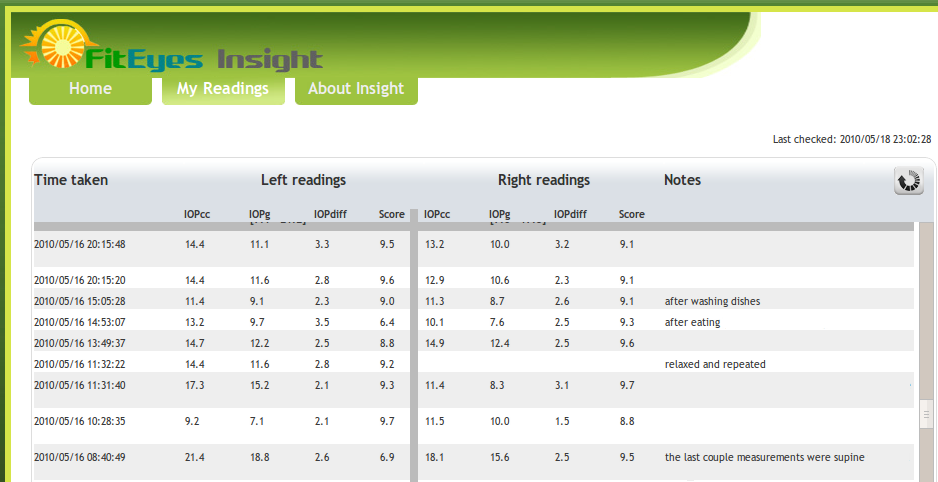How to install FitEyes Insight Application for Reichert AT555 Tonometer (alpha version)


Hello
Actually I have lost the user manul for AT555.Now the unit is accidently travel locked.
Can anyone please explain how to unlock it?
Thanks in anticipation!
In my experience the best tonometers for home use (a.k.a., self-tonometry) are the Reichert AT555 and the Tiolat iCare. Of these the Reichert is much easier to use.
Today, miller13 said,
Had the proview: it never worked :(
I say that's no surprise! Thanks for reporting your experience.
miller13 also asked some questions about which tonometers are suitable for self-tonometry.
I made a visit to a new doctor. I exercised before I left with my pressures around 13 on the AT555. The doctor tested my pressure around 22-23. Wasn't surpising since my pressure always seems to be high when I go to the doctor. Coming home, tested 19-20 on the AT555.
He looked at my nerves and didn't like what he saw ("looks like crap" was his exact wording), so he is sending me to a specialist. He said if he were me, he would get a trab immediately in both eyes.
I have an appointment with the specialist on Tuesday.
Hello Members,
I have had my Reichert AT555 for two days now and taken taken quite a number of readings. Though my IOP does fluctuate, which I did understand is expected, I have seen much lower pressures than I thought I would! My opthalmologist's target pressure for me was 25 on Xalatan. I had frequent pressures of 30+ in his office but much lower numbers in my optometrists office (my friend). During the past two days I have seen only 1 average of 32 in 1 eye, and the majority of the time the IOP is mid 20s or lower (this is off medication). I have been off the Xalatan for the past month. Of course, now that I see my IOP can be even lower than his target of 25, I plan to work on obtaining this on a consistant basis (off medications).
UPDATE: please see new info in this comment: New USB-Serial Port Converter Info in comment-2096
We also have a new software program called FitEyes Insight that makes organizing and understanding your eye pressure data much, much easier!
 White coat hypertension (or white coat syndrome) is a widely recognized blood pressure phenomenon. However, white coat ocular hypertension is not yet recognized by the medical community. One of the first reports of white coat ocular hypertension was published Tuesday, April 24, 2007 here on my blog in an article titled White Coat Syndrome for Eye Pressure.
White coat hypertension (or white coat syndrome) is a widely recognized blood pressure phenomenon. However, white coat ocular hypertension is not yet recognized by the medical community. One of the first reports of white coat ocular hypertension was published Tuesday, April 24, 2007 here on my blog in an article titled White Coat Syndrome for Eye Pressure.
Today's article represents a follow up to that first report. The purpose of this experiment was to determine if my intraocular pressure is again different when measured in the doctors office compared to when measured at home.
I define white coat ocular hypertension as a situation where patients exhibit elevated eye pressure (intraocular pressure) in the doctor's office but lower eye pressure at home (or in similar situations where they are comfortable). Patients with white coat ocular hypertension will often experience elevated eye pressure under stressful situations other than the physician's office. My data reported below and in the first report of white coat ocular hypertension fit this definition well.